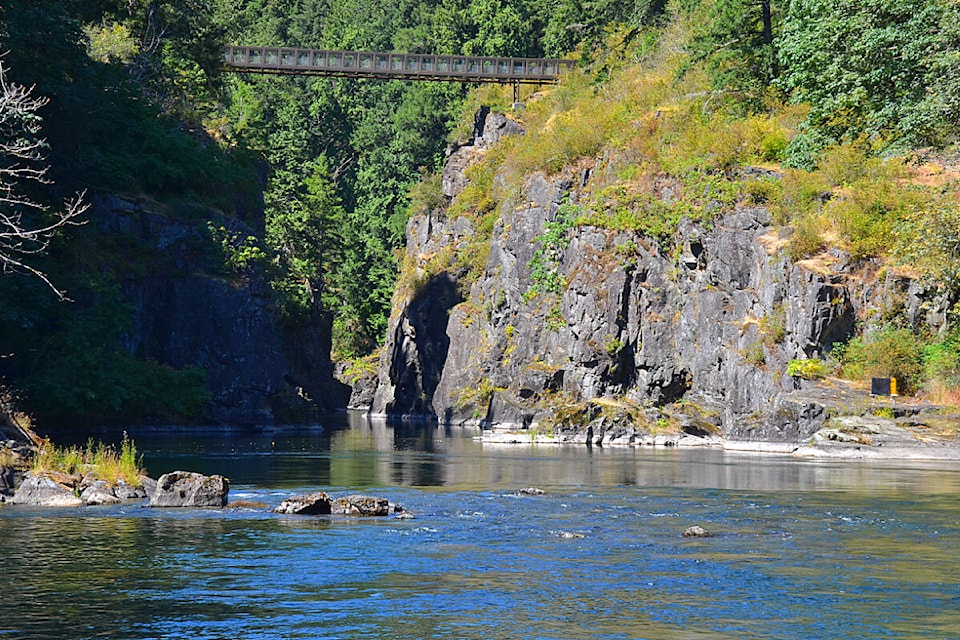Water flows into the Campbell River watershed have been third lowest and “very close to the driest” in 54 years of record, according to BC Hydro spokesperson Stephen Watson.
“Since the October update, precipitation in the upper watershed has been very low,” Watson said in his latest system update, Nov. 17.
October was 58 per cent of normal, and November to date, is 38 per cent of normal., Watson said.
November is normally the wettest month of the year. Since October 1, the water inflows into the Campbell River watershed have only been about 20-30 per cent of normal.
“Over this six-week period it’s the third lowest water inflows we’ve seen into the system, and very close to the driest, in 54 years of record,” Watson said.
The water inflows into the system this week have been around 20-25 cubic metres per second (m3/s), versus BC Hydro’s discharge below the John Hart facilities of about 65 m3/s.
BC Hydro increased the Campbell River flows from about 40 m3/s to about 80 m3/s on Sept. 22, then, given the ongoing dry conditions, reduced the flow to 65 m3/s on Oct. 17. The target flow for Chinook spawning is 100 m3/s to 125 m3/s.
Meanwhile, the Upper Campbell Reservoir/Buttle Lake is currently at 214.65 metres. As the fall season has progressed the reservoir level has moved from the preferred reservoir elevation zone, to the lower corrective zone, to the special corrective zone given the very low water inflows. BC Hydro forecasts the reservoir hitting around 214 metres before recovering with the falls rains.
The Lower Campbell Reservoir/McIvor Lake is in a similar situation and is currently at 175.2 metres.
“There is some forecasted rain next week so, hopefully, we will see a nice rise in water inflows,” Watson said. “It is likely that the Campbell River flow will remain at 65 m3/s into next week.
“While water levels are low on the Campbell River system along with other Vancouver Island hydroelectric watersheds, we are fortunate to have an integrated provincial system and the supply of power is not an issue. Our large hydroelectric systems are in good shape.”
Quinsam River update
Watson also provided an update on the project to pump water into the Quinsam River to improve spawning conditions for salmon.
“We mobilized crews the week of Oct. 17 to pump water from Upper Quinsam Lake into Wokas Lake to ensure we can continue to provide water flows down the Quinsam River to protect fish habitat,” Watson said.
READ MORE: Pumps mobilized to save Quinsam River salmon habitat
The pumping, of about 0.7 m3/s, was in place from Oct. 22 to Nov. 2. With some “modest” rains around the end of October, the Upper Quinsam Lake improved slightly and resulted in better connectivity of the two lakes and was naturally able to provide about 0.7 m3/s. The lake level has only come up about 10 cm since late October due to the continued dry conditions and the colder weather.
“The pumping equipment has remained on standby until the natural inflows are near normal again and the lake elevation has increased,” Watson said. “Hopefully, with some rains forecasted the equipment can be removed soon.
“The Quinsam River has been low this fall making it harder for larger salmon, such as Chinook, to access the system for migration and spawning. This will likely mean more Chinook spawning in the Campbell River.”
READ MORE: Rain shadow effect leaves Campbell River watershed with little change despite atmospheric river
